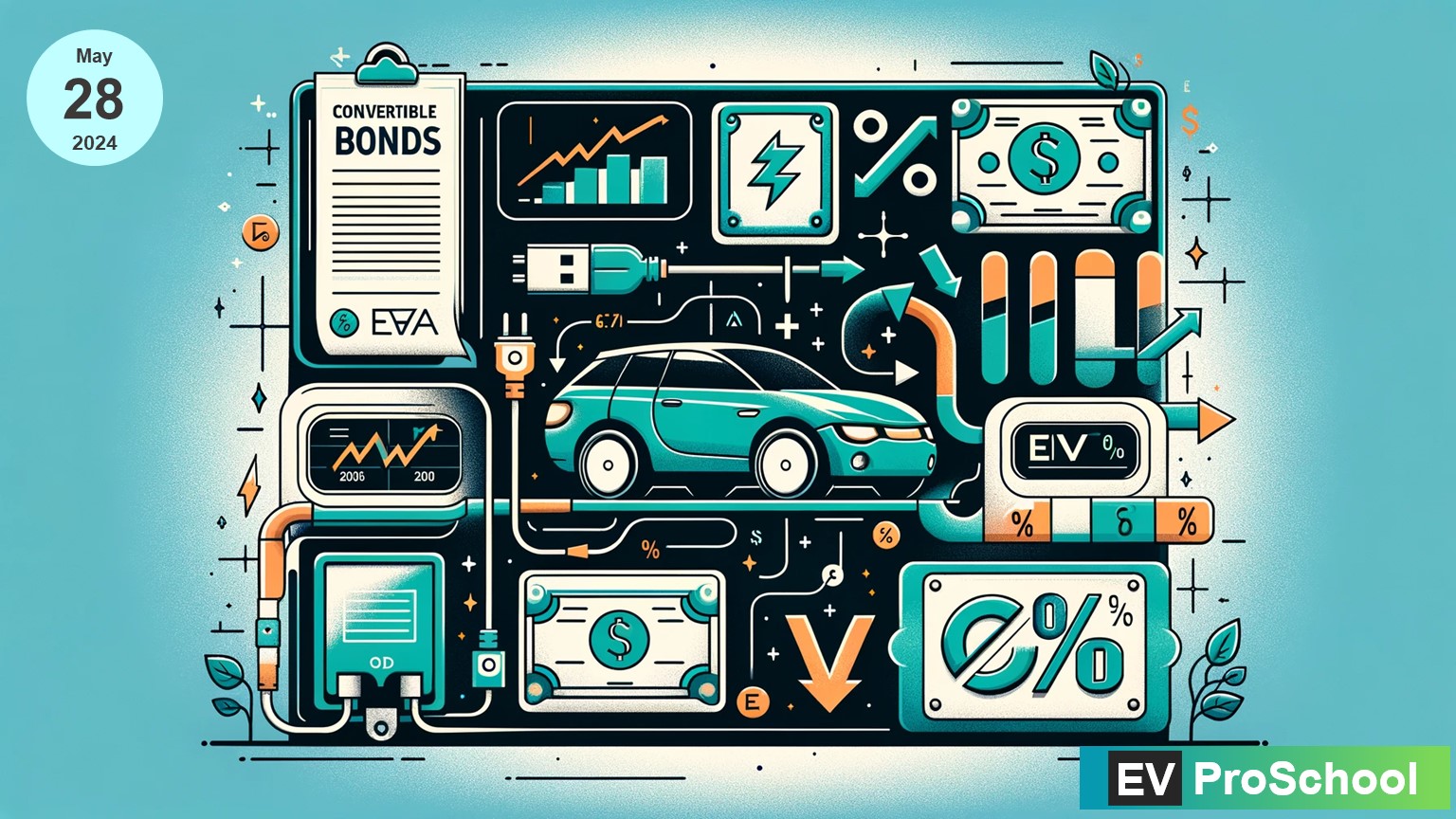In the dynamic world of electric vehicle (EV) manufacturing, raising capital is as innovative as the cars themselves. One such method is through convertible bonds—a type of compound financial instrument that embodies characteristics of both debt and equity. Understanding these instruments is crucial for EV companies looking to diversify their financing options.
What Are Compound Financial Instruments?
A compound financial instrument has elements of both a financial liability and equity. Convertible bonds, for instance, are a quintessential example—they are bonds that can be converted into a pre-determined number of company shares at specific times in the future.
Convertible Bonds: The Hybrid Financial Engine
Convertible bonds pose a unique situation for financial reporting. How should they be classified? As a liability, equity, or both? The answer is not a simple lane change—it’s a bit of both!
When an entity issues a convertible bond, it recognizes the liability component separately at its fair value—the amount that would be paid at maturity. The equity component is identified as the difference between the proceeds from the issuance of the bond and the fair value of the liability.
A Real-World Example:
Sure, let’s illustrate this with an example for an EV company, “FutureDrive Inc.”, issuing a convertible bond.
Assumptions:
- FutureDrive Inc. issues convertible bonds worth a total of $1,000,000.
- The bonds have a 5-year maturity with an annual coupon rate of 4%.
- Similar non-convertible bonds yield a market interest rate of 7%.
- The conversion feature allows bondholders to convert their bonds into shares at 10% above the face value of the bonds at the end of the bond term.
Calculating the Liability Component:
First, we need to calculate the present value of the future cash outflows (the principal and the annual coupon payments) using the market interest rate for similar debt without conversion rights.
- Present Value of Principal: The principal ($1,000,000) due at the end of 5 years would be discounted back at 7%. Let’s say the present value factor at 7% for 5 years is 0.713. The present value of the principal is $1,000,000 * 0.713 = $713,000.
- Present Value of Coupon Payments: The annual coupon payment is 4% of $1,000,000, which equals $40,000. This $40,000 is an annuity over 5 years. The present value of an annuity factor at 7% for 5 years is, let’s assume, 4.100. The present value of the coupon payments is $40,000 * 4.100 = $164,000.
- Total Liability Component: The sum of the present value of the principal and the coupon payments is $713,000 + $164,000 = $877,000.
Calculating the Equity Component:
Now, we need to determine the equity component.
- Proceeds Received: This is the amount FutureDrive Inc. actually received for the bonds, which is $1,000,000.
- Fair Value of Liability: We just calculated this as $877,000.
- Equity Component: This is the difference between the proceeds received and the liability component, which is $1,000,000 – $877,000 = $123,000.
Journal Entry at Issuance:
- Debit Cash $1,000,000
- Credit Bonds Payable (Liability Component) $877,000
- Credit Equity (Equity Component – Convertible Bonds Option) $123,000
Here’s how the table would be formatted using the figures I mentioned before:
| Description | Value (INR) |
|---|---|
| Face Value of Convertible Bonds | 1,000,000 |
| Annual Coupon Rate | 4% |
| Market Interest Rate (for discounting) | 7% |
| Years to Maturity | 5 |
| Present Value of Principal (discounted at 7%) | 713,000 |
| Present Value of Coupon Payments (discounted at 7%) | 164,000 |
| Total Liability Component | 877,000 |
| Equity Component (Proceeds – Liability Component) | 123,000 |
Explanation:
The bond liability represents the part of the bond that FutureDrive Inc. is obliged to pay regardless of conversion—the debt. The equity component represents the value of the conversion option that investors get—an option to convert their bonds into FutureDrive Inc.’s shares at a predetermined price.
In the books of FutureDrive Inc., the liability component will be amortized over the life of the bond, which means the carrying amount will increase from $877,000 to $1,000,000 through charging the effective interest to profit or loss. The equity component will stay in equity until conversion or redemption, at which time it would be reclassified to share capital and share premium if the conversion option is exercised.
This is a simplified example, and in reality, the calculations would involve precise present value formulas and market data at the time of issuance.
Accounting concepts using the above example
In simpler terms always remember : Debit what comes in and credit what goes out
- Debit (Dr.) means something is increasing in your assets or expenses.
- Credit (Cr.) means something is increasing in your liabilities, equity, or revenue.
Accounting for the Bond (Initial Entry):
- When FutureDrive Inc. issues the bonds, they receive cash. This is a Debit to Cash because it increases their assets. (Debit what comes in)
- At the same time, they have a new obligation to pay back this money in the future, so they have a new liability. This is a Credit to Bonds Payable. (Credit what goes out)
- Since these bonds can be converted into shares, there’s also an equity component. This part is a bit trickier. It represents the value that investors give to the option of converting their bonds into shares later. This is a Credit to Convertible Bonds Equity.
Paying Interest (Yearly Entries):
- Each year, FutureDrive Inc. pays interest on the bond. This is an expense, so they would Debit Interest Expense.
- When they actually pay the cash to the bondholders, they Credit Cash, reducing their assets.
Conversion of the Bond (Final Entry):
- Let’s say after 4 years, the bondholders decide to convert their bonds into shares of FutureDrive Inc.
- The liability (what they owe the bondholders) goes away because it’s being turned into equity.
- They Debit Bonds Payable to remove the liability.
- They Credit Share Capital for the value of the shares that are now issued.
- If there’s any difference left because the shares are worth more than the bonds, they Credit Share Premium.
Simplified Journal Entries:
Here’s what the journal entries might look like in simple terms:
Issuing the Convertible Bond:
- Debit Cash $1 million (We got money!)
- Credit Bonds Payable $950,000 (We owe this much without the conversion option)
- Credit Convertible Bonds Equity $50,000 (The extra value for the option to convert into shares)
Paying Interest (Yearly):
- Debit Interest Expense $50,000 (Cost of borrowing money)
- Credit Cash $50,000 (Paying out interest)
Conversion of the Bond:
- Debit Bonds Payable $950,000 (Don’t owe this anymore, it’s becoming shares)
- Debit Convertible Bonds Equity $50,000 (Convert the option value into actual shares)
- Credit Share Capital $900,000 (Value of the new shares)
- Credit Share Premium $100,000 (Extra value because shares are worth more than the bonds)
Think of it like this: FutureDrive Inc. borrowed some money (bonds) and promised to pay back with interest. But if the company does well, bondholders can choose to get shares instead of getting their money back. If they do, the company just hands out shares and no longer owes the bondholders cash. The accounting entries just track this story in numbers.
I hope this helps you understand the accounting behind convertible bonds! If you need more detail or clarification on any point, feel free to ask.
Charging Forward with Disclosure
Convertible bonds allow EV companies like VoltEdge Motors to potentially lower their interest costs and delay diluting their equity while providing investors with an option to convert into equity if the company performs well. However, it’s not just about plugging in numbers—it’s about clear disclosure in financial statements to communicate the nature and terms of these instruments to investors and stakeholders.
In conclusion, convertible bonds offer a versatile financial tool for the EV industry, powering innovation while providing a balanced route for financing growth. Companies must navigate these financial paths carefully, ensuring they report accurately and transparently in their financial statements.



